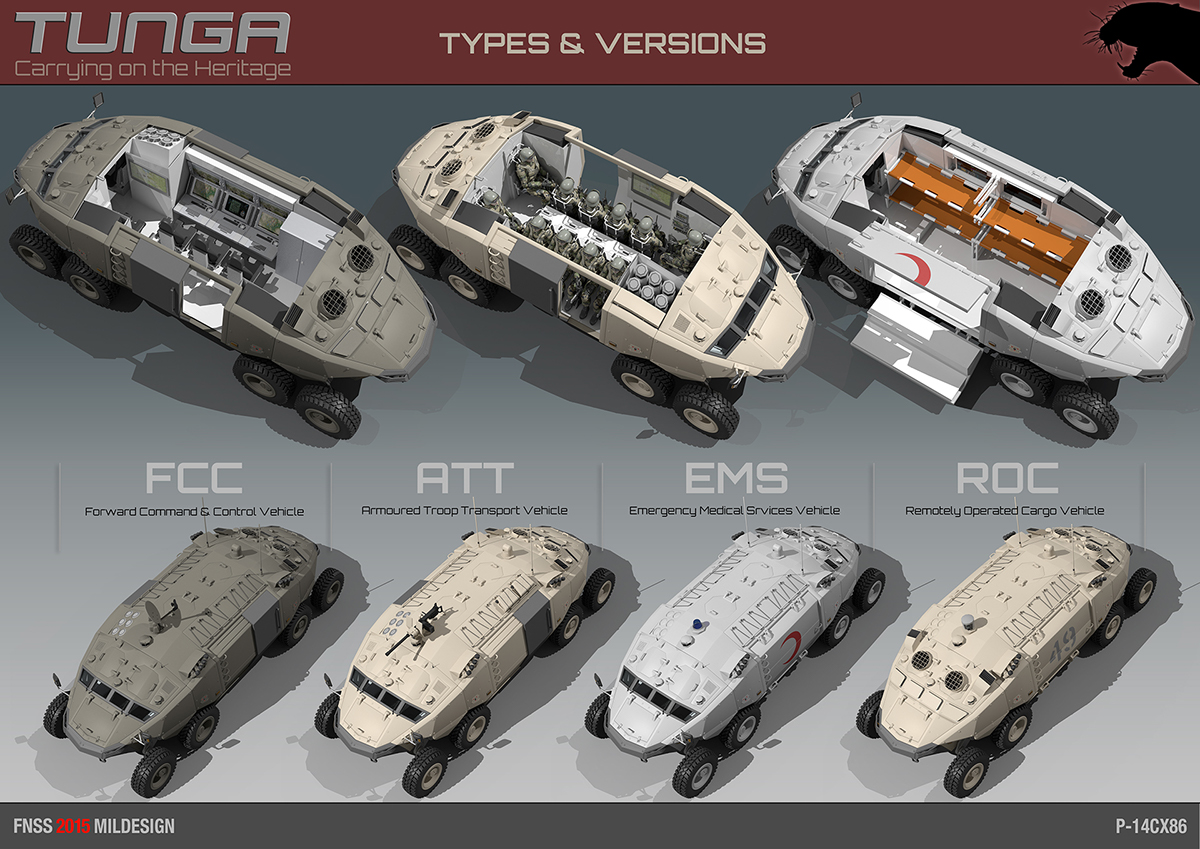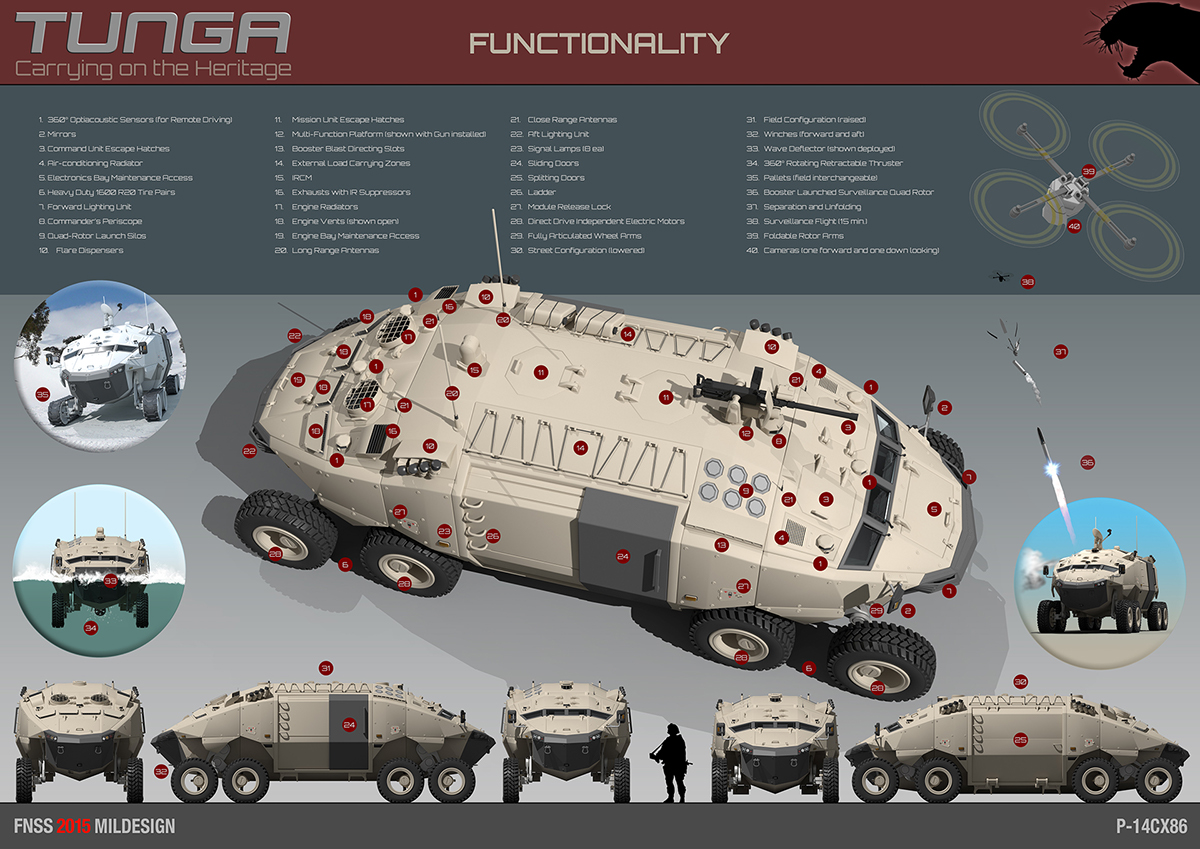TUNGA was my entry to MILDESIGN 2015 Competition by FNSS, an armoured land vehicle manufacturer in Turkey.
TUNGA is the local name for a carnivore that lives in Central Asia and belongs to the same family with Leopard and Pars. The name also implies great courage and heroic attitudes.
TUNGA’s design is pivoted around modularity and flexibility requirement. Forward and aft modules are structurally identical. Together with longitudinal symmetry of the vehicle, this approach reduces the number of parts to be manufactured around 30%.
Forward and aft modules are field replaceable without external assistance (i.e. cranes). Batteries located in the Command Module help the vehicle can be operated with electrical power only for 10 minutes with the diesel engine shut off. This is critical for stealthy approach to any target. The same batteries also help the Command Module get seperated from one Mission Module on its own power.
The Power Module is roomy enough to accommodate a 600 hp class diesel generator. All wheels are driven separately with electrical power and can be operated at different rotational speeds. No mechanical transmission exists on the vehicle. All wheels can be steered independently, as well. There is no steering wheel in the cockpit. TUNGA is a drive-by-wire vehicle and steered via a joystick.
Side doors provide alternative escape routes in case of a threat, and reduce ingress and egress times during normal operation. Depending on the need, either a sliding door or a splitting door can be installed on the same understructure. Splitting door is optimized for loading and unloading of large cargo (i.e. missile crates and stretchers for medical missions).
The wheel integrated electrical propulsion system together with fully articulated independent wheel arms, enables the field replacement of tires with caterpillar tracks for soft ground operations.
A 360 degree rotatable thruster is stowed in the Power Module for maritime operations. The forward armor is extended to become a wave-deflector when and as necessary.
The Mission Module has room for six canisters for a “Booster Launched Surveillance Quad-Rotor”. Following the exhaustion of the booster, the Quad-Rotor separates and unfolds the rotor arms. The Quad-Rotor is capable to provide real-time daylight and low-light imagery to the vehicle for 15 minutes. Six drones warrant a 1.5 hrs of aerial surveillance capability.
In the remotely operated version of the vehicle, two power modules, each accommodating a 450 hp class diesel generator are connected at each end of the mission module for increased redundancy. Six optiacoustic sensors provides 360 degree coverage for the external driver through a Virtual Reality Goggle. Multi function platform on top of the Mission Module incorporates provisions for a Lidar installation for fully autonomous operation






